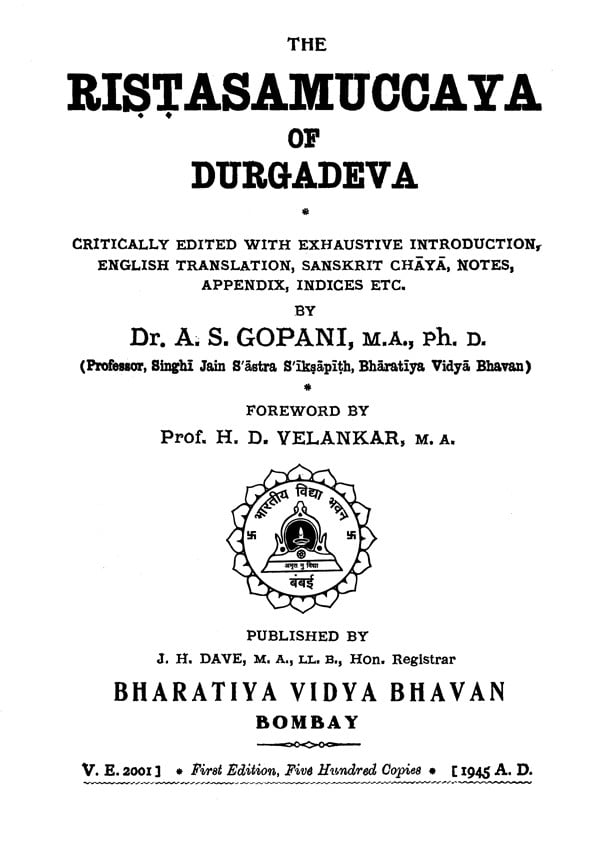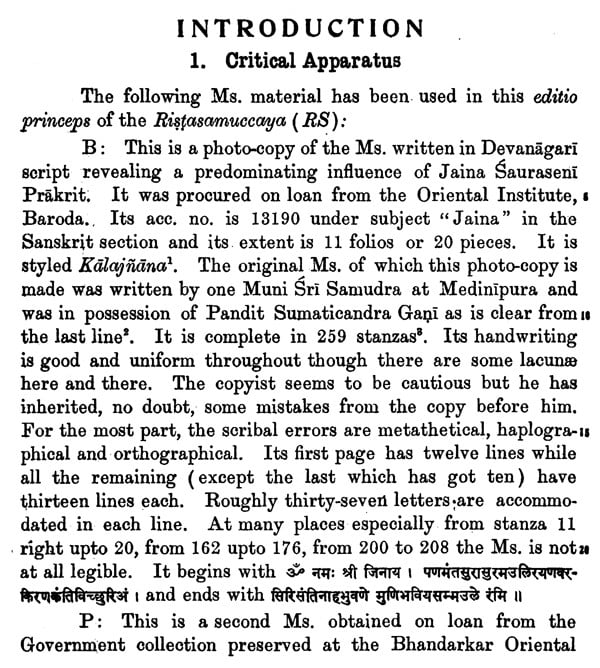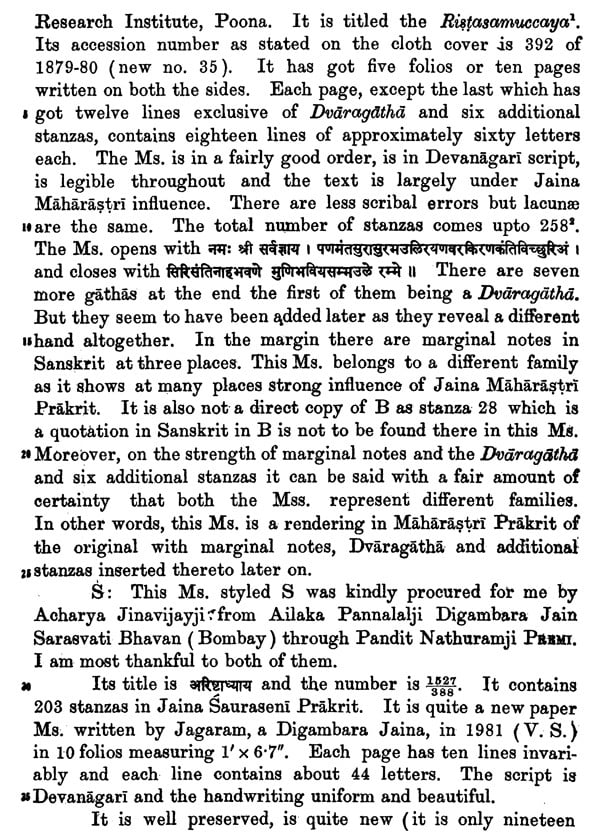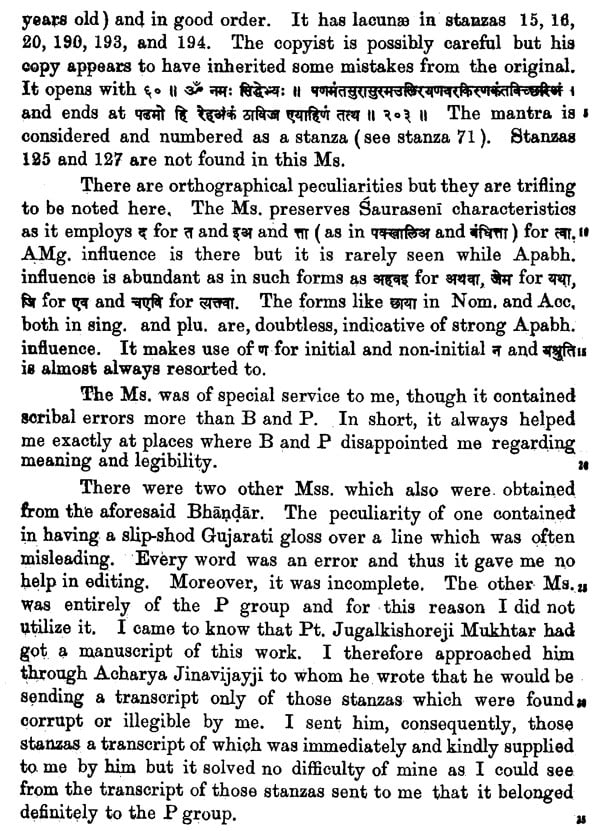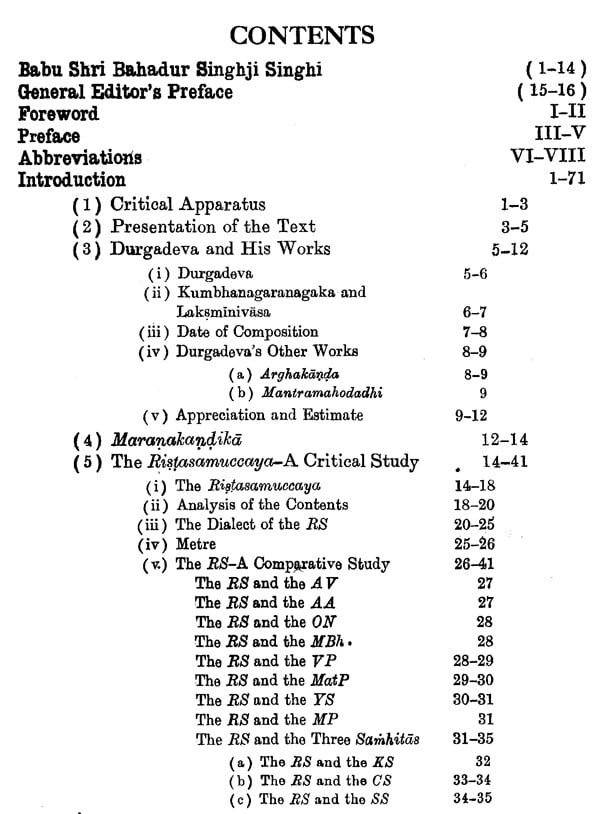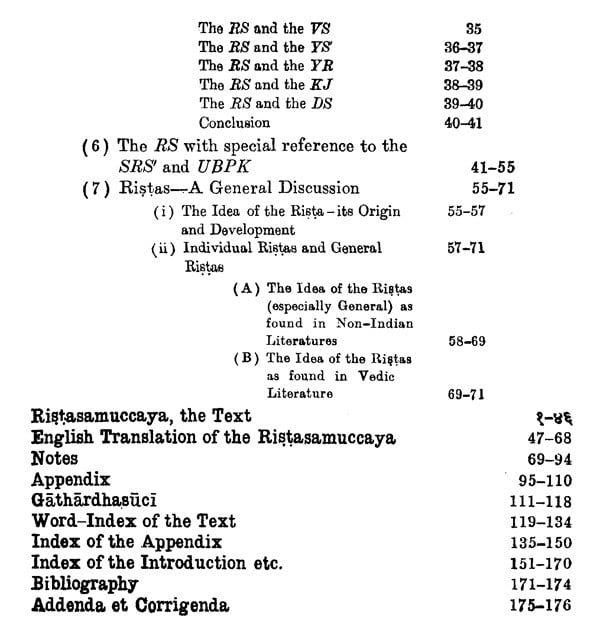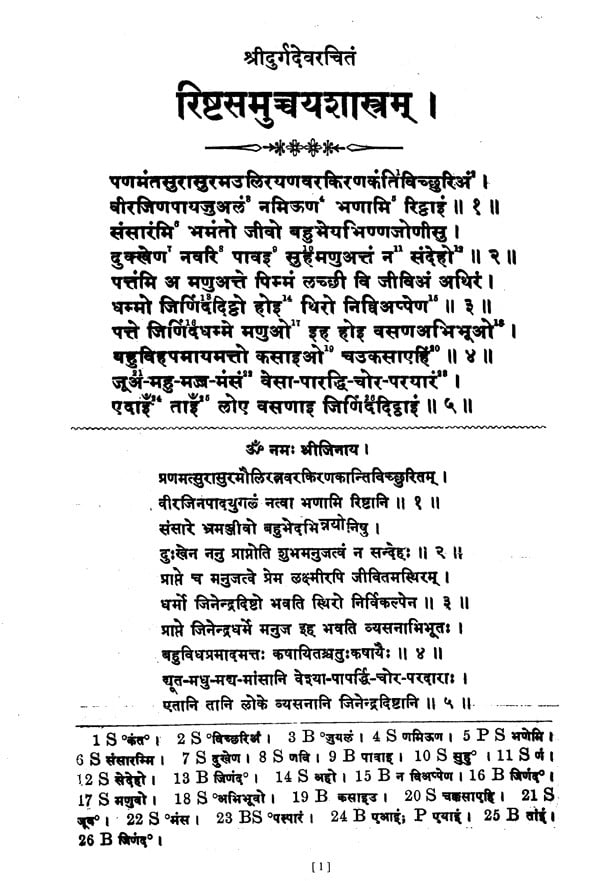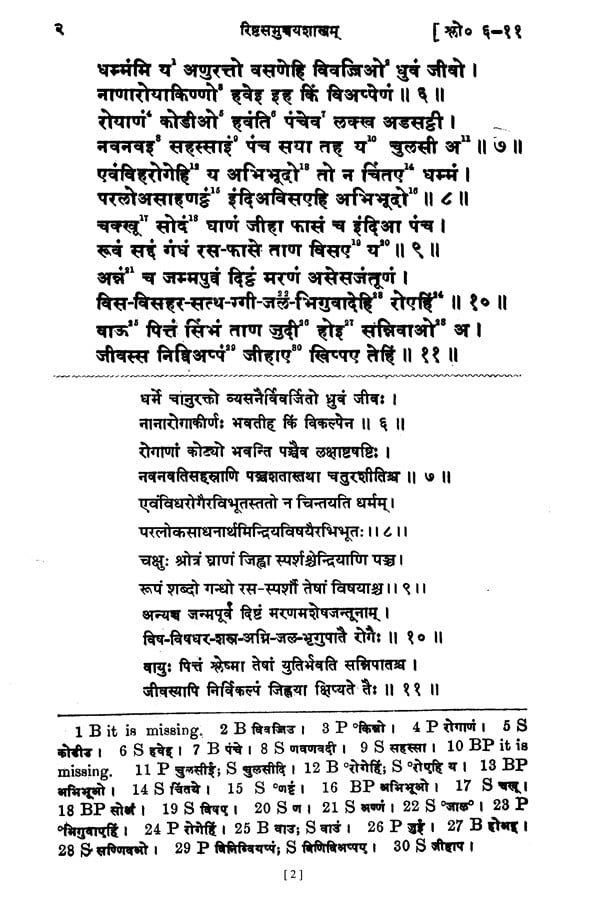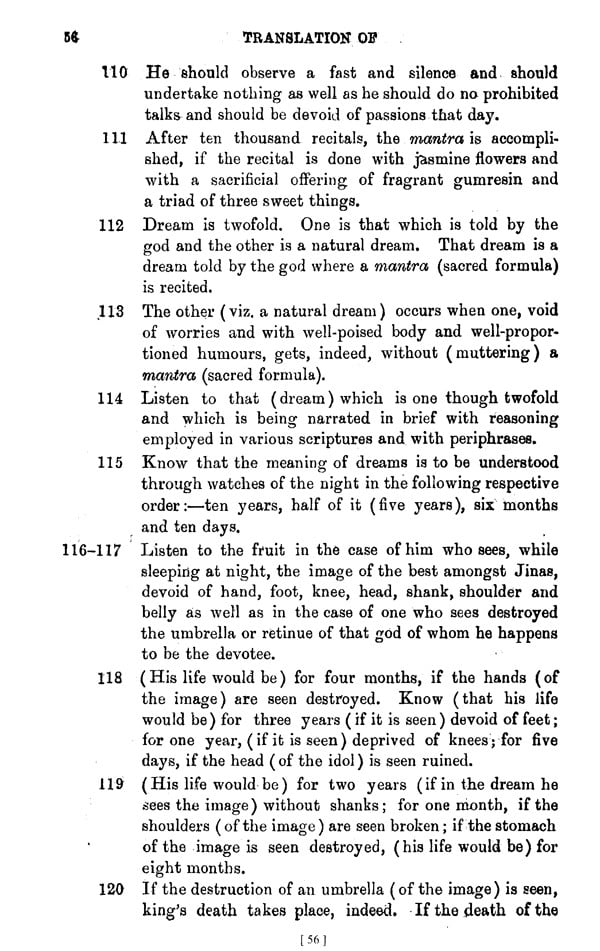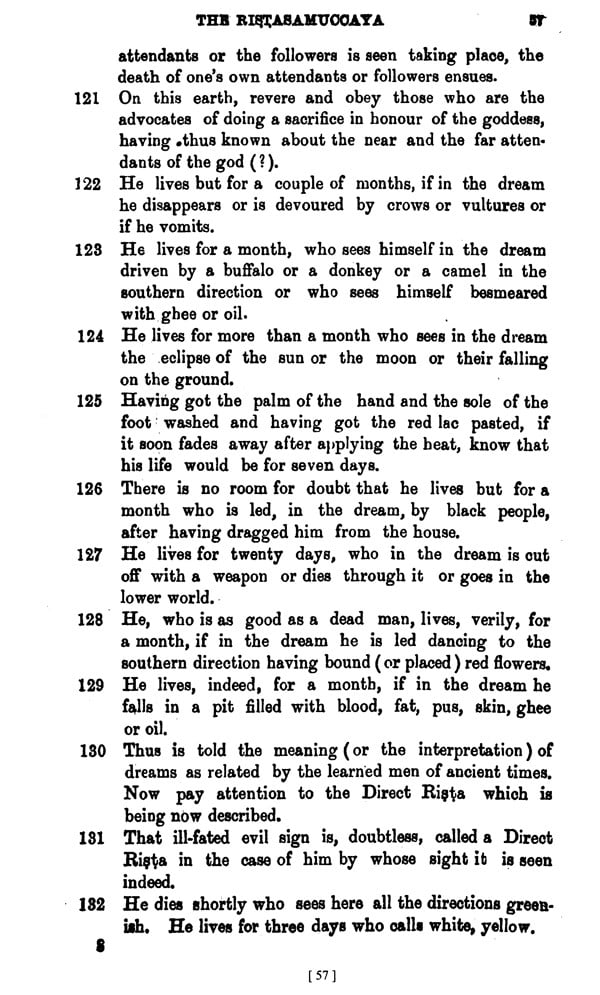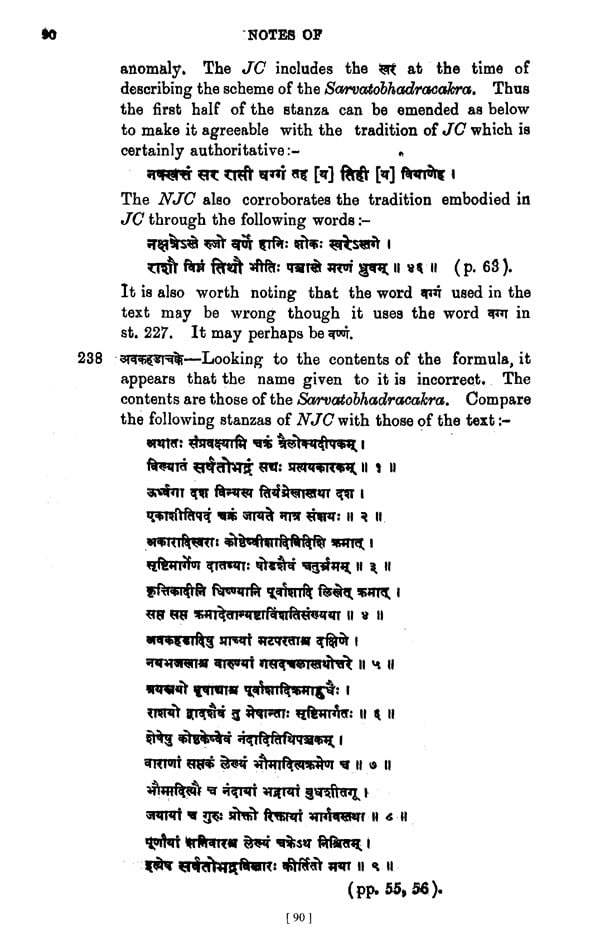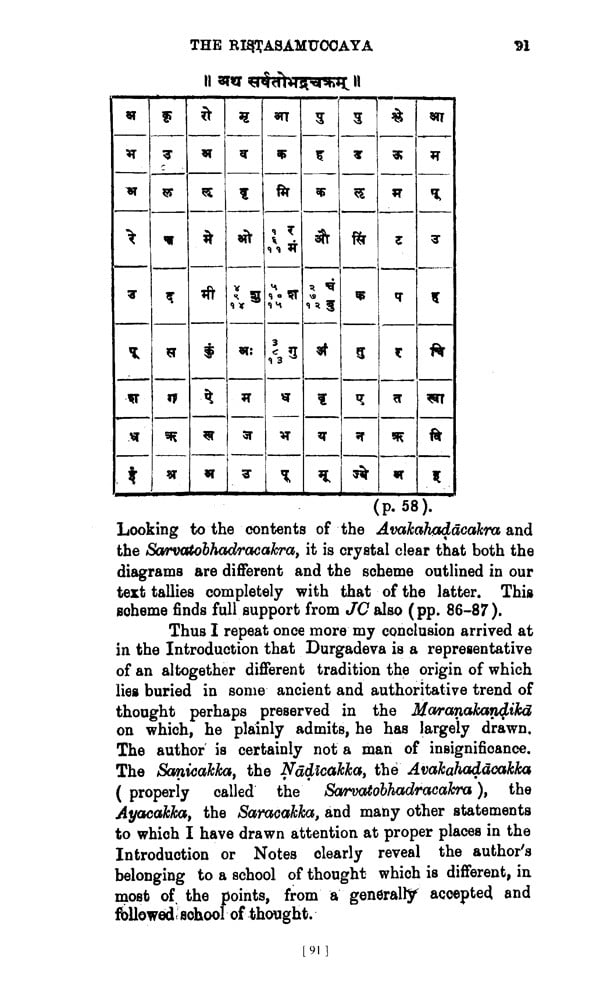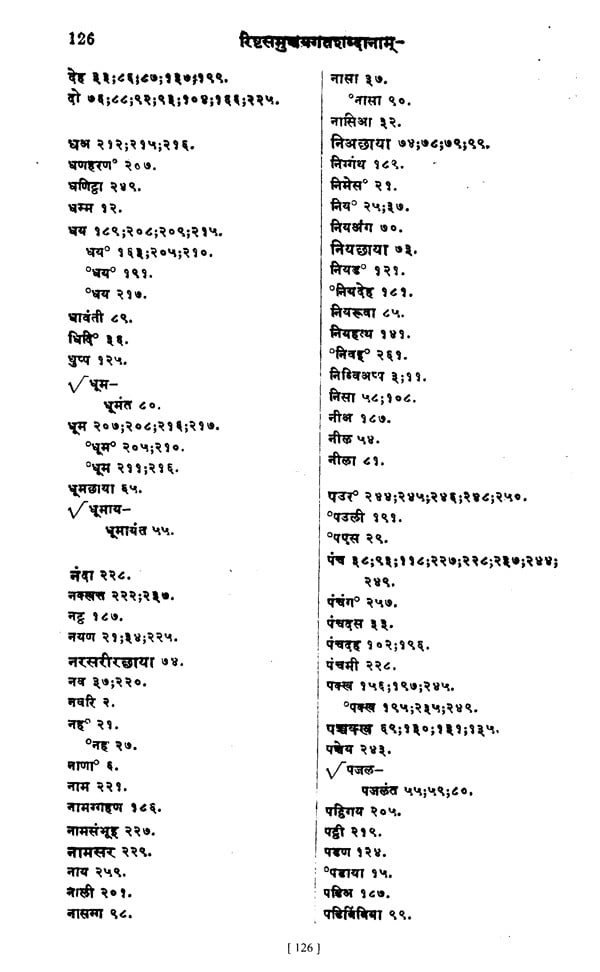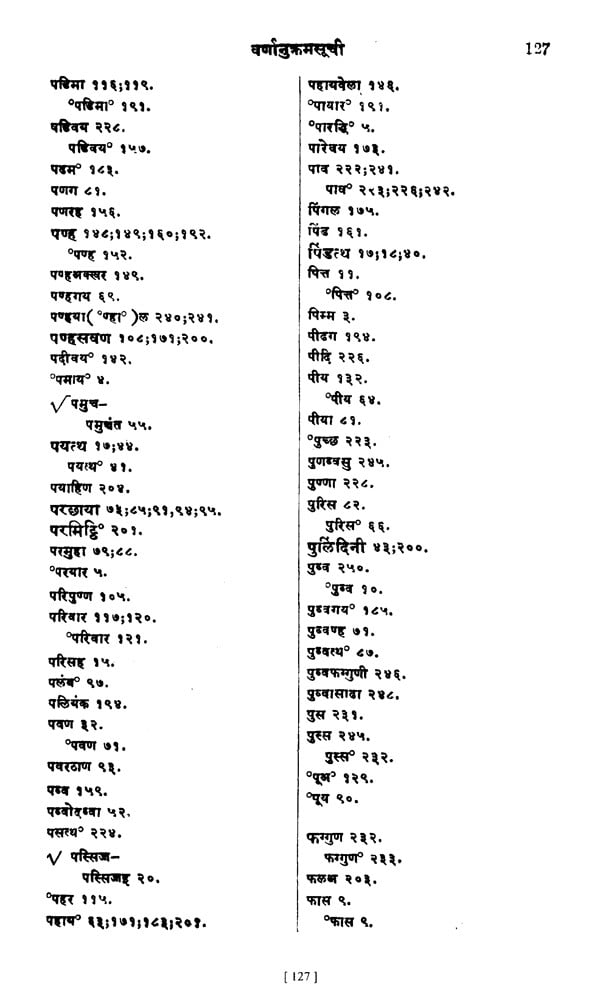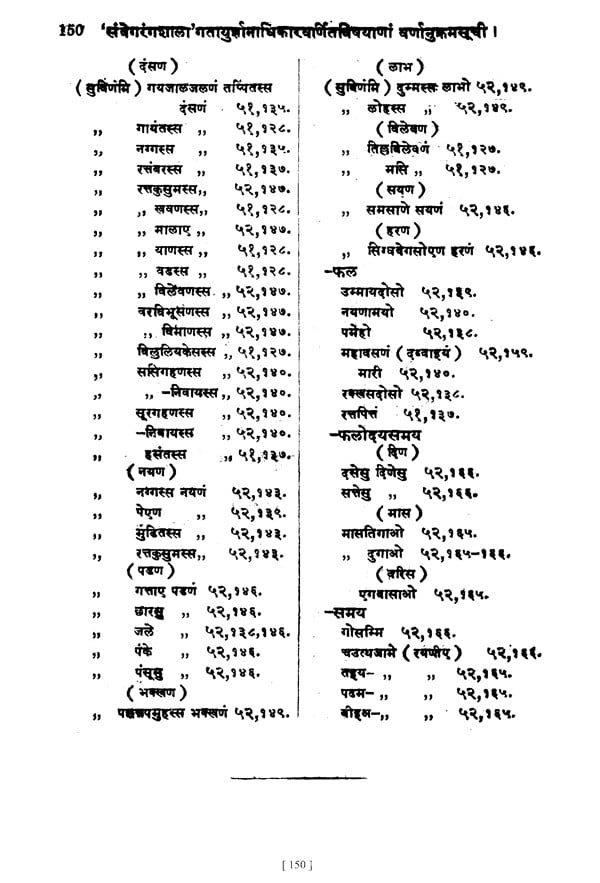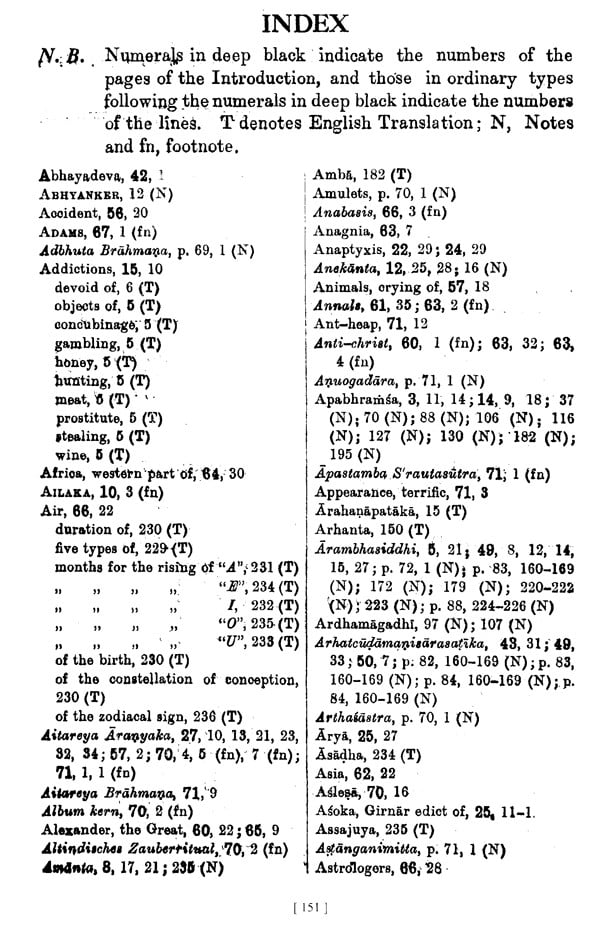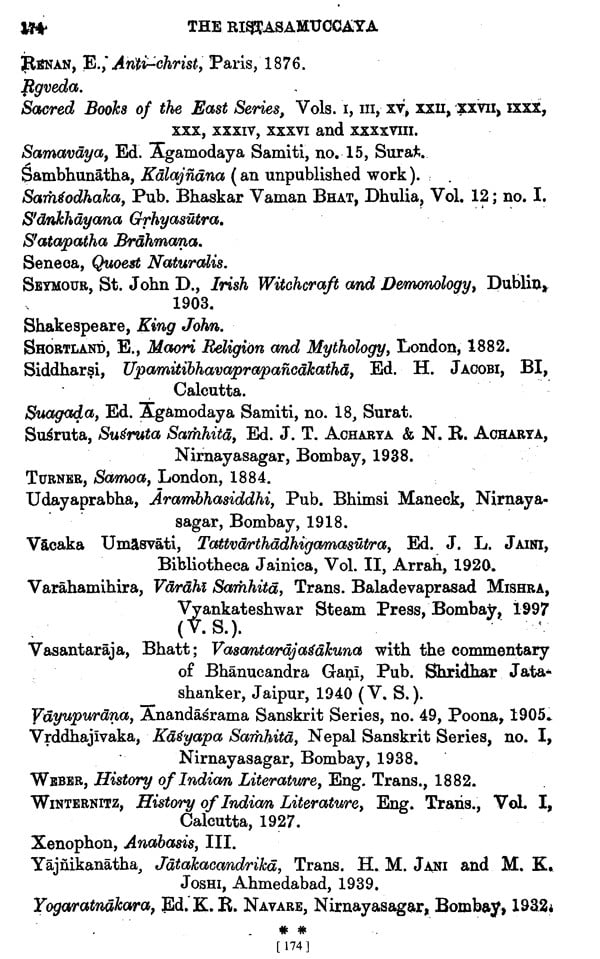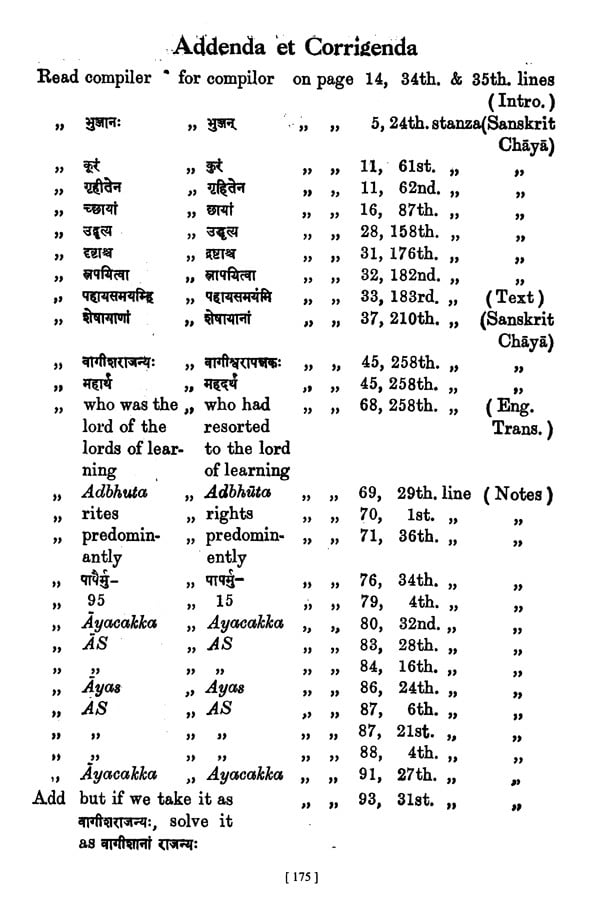
दुर्गदेवाचार्य कृत रिष्टसमुच्चय- The Ristasamuccaya of Durgadeva (An Old Book)
Book Specification
| Item Code: | UAB313 |
| Author: | Jin Vijay Muni |
| Publisher: | Prakrit Bharati Academy, Jaipur |
| Language: | Sanskrit, English and Prakrit |
| Edition: | 2017 |
| ISBN: | 9789381571903 |
| Pages: | 220 |
| Cover: | HARDCOVER |
| Other Details | 10.00 X 7.50 inches |
| Weight | 650 gm |
Book Description
Durgadeva was a Digambara Jaina; he was a pupil of Samyamadeva and lived at Kumbhanagara in North India, during the reign of a king called Laksmanivasa, He composed the present work in Sam. 1089. Prof. GOPANI has well shown how this same Durgadeva had also written two other works on allied topics, namely the Arghakd'!l4a in 149 stanzas and the Mantramahodadhi in 36 stanzas. Both these are in Prakrit .like the present work i.e., the Ristasamuccaya, and are compo- sed in the Qatha meter. Rikta is a presage of oncoming death and the Ri~f,a8amu(Jnaya is a compendium of the "fates, which may be based on various signs seen in one's own body, or on the different events connected with the natural phenomena, or on the nature of the dreams seen in sleep, or on a number of other artificial devices such as the number and nature of the letters which' constitute the question about a rikta put by a Questioner.
,The subject is a very interesting one and one is really pleased to find that Prof. GOPANI has expended patient and intelligent labor on its elucidation both in the Introduction and in the Notes, He has briefly attempted to trace the origin and development of it from earliest times both in the Jain and the None. Jain traditions. In his Introduction, he has carefully compared the contents of the Ristasamuccaya with those of similar older texts on omens and portents and has concluded that the Ristasamuccaya represents an original tradition and that it is the only representative today of this tradition .
The text is carefully prepared after consulting three different Mss., the variants being given in the foot-notes below the text. Full English translation is offered with sufficient explanatory Notes. The Appendix contains extracts from similar older works, whether Sanskrit or Prakrit, Jain or Non- Jain and is followed' at the' end by" five useful Indices and I exhaustive Bibliography. 1 am sure that the. publication will be highly appreciated and will bring credit both to the Editor and. to the Publishers.
The R~ta8am'Uccaya' of Durgadeva has been catalogued by Utrecht and referred to by the Jiao Granthavali.
Durgadasa is a master hand at the art of condensing. No treatise in the Jaina or non-Jaina "literature is uphill now known to have 8.0 ably summarized in so short a compass a vast topic like that of prognostics portending death. He is a matter- of-fact writer making a definite statement of his beliefs and conclusions sometimes following and many times going against the established theories. He has impressed me more as an iconoclastic chronicler than as a passive -compiler. Looking to his varied gifts and wide range of his experience I have begun to believe- firmly that he was in possession of sure traditional knowledge of which we have but scanty information.
I have offered here. the detailed results of my studies of three important Mss. of this work that was available to me. The constitution of the text .which I have done with maximal faithfulness was very much troublesome in view of grammatical and metrical corruptness, material inaccuracies, scribal errors And lounge. Looking to the limited Bilateral. at my disposal I had no other alternative but to offer emendations which I have placed in-brackets and.whicholaim.to be only tentative.' .Lhasa - attached a-Sanskrit Chaka. and an. English Translation .to ensures easy understanding. The ahead text. All. the variants: are . noted in the foot-notes. I insertion of representative parallel passages, in the Appendix ‘are the (jam various-published unpublished "Darks or Jaina and non-Jaina literatures is 'especially made to give to readers a correct, comprehensive and comparative estimate of the idea of omens and portents. Notes in which comparison and contrast are made at proper places are in a way.
explanatory. The Gathaordhasuci and the Indexes of the Introduction, text and .alao of the parallel passages, which .are com- elementary to each other, have been· added at the end. They are followed by an exhaustive Bibliography which provides material to the future workers on the subject. It is hoped that the readers will certainly appreciate their efficiency and importance. The Introduction aims at setting forth various views' and theories of omens and portents which were once in vogue in all the cultures namely Greek, Roman, Christian, Mohammedan, Vedic, Jaina and Buddhist. The Science of the U n- known, that of Omens and Portents and also that of the Rituals have much in common between them. A critical study of the thoughts and beliefs concerning prodigies and portents prevalent in different times and climes reveala some interesting basic principles running right through all of them, governing and shaping the origin and development of omens and portents. As this was quite essential I have treated in general all. these aspects in the Introduction. It also deals with the description of the Ms. material and of the method adopted in the constitution and construction of the text .. Personal details of the writer and his other works, analysis of the subject, the estimate of the Ristasamuccaya with special reference to literature of its type, grammatical and linguistic characteristics, and metrics, have a been critically studied and explained.
Book's Contents and Sample Pages
